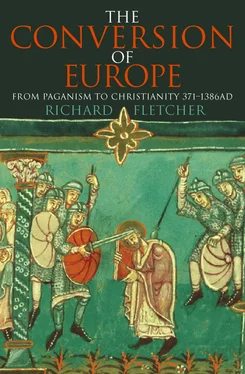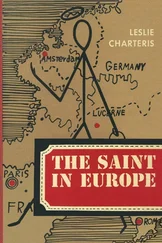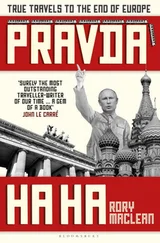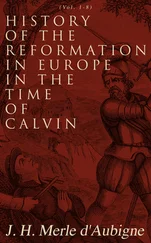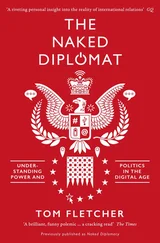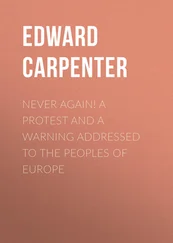These diverse sources of information in written form may be supplemented by the material evidence of surviving objects or structures. Two notable excavations have helped us to grasp something of the setting of Edwin’s kingship. Aerial photography above the valley of the river Till, near Wooler in Northumberland, revealed in 1948 a complex of markings which were initially taken to indicate the remains of a hitherto unknown monastic settlement. Excavation in the 1950s revealed the site of Edwin’s residence at Yeavering with its associated structures, scene of the mass baptisms administered by Paulinus. Some years later, in the early 1970s, threats to the stability of the central tower of York Minster necessitated a strengthening of the foundations, which permitted some limited and hazardous archaeological excavation. It was in the course of this operation that it was discovered that the pillared square of the Roman praetorium was still standing in good repair in Edwin’s day. Some of the archaeological materials from this age may speak to us even more directly of conversion, as we shall see in due course.
There are hard questions to be faced, and intractable evidence to answer them with. But face them we must, and do with it what we can, if we are to do justice to the grandeur of our theme. Yeavering is a long way beyond what had been Rome’s northernmost frontier, Hadrian’s Wall. Edwin’s great hall was an enormous barn-like structure of timber, with doorways in the long sides through which a sparrow might pass from winter darkness to winter darkness. The quantities of cattle bones excavated near by suggest that the king and his retainers gorged themselves on beef, washed down no doubt by copious draughts of beer from generous drinking-horns like those found at Taplow or Sutton Hoo. A barbaric scene: yes, but not far from the hall there stood a flight of curved benches, rising in tiers and lengthening as they rose, whose occupants’ gaze would have focused upon a dais at ground level backed by a massive wooden post. This structure can only have been designed for seating an assembly which might be addressed from the dais. The design of this auditorium irresistibly recalls as it were a segment from a Roman theatre. Did Paulinus address Edwin’s warriors from that dais? Perhaps. The encounter between Paulinus and Edwin was one between Roman and barbarian, Christian and pagan, Latin and Germanic, literate and oral, wine and beer, oil and lard, south and north. It opened up perspectives on to distant notions and activities beyond the wildest surmises of the participants.
Christianity traces its historic roots to the ministry of a Jewish preacher and exorcist in a backward province of the Roman empire. As an offshoot of Judaic stock, early Christianity was heir to the proselytizing zeal of its parent. Accustomed as we are to a merely self-perpetuating style of Judaism which was brought about by subsequent centuries of Christian and Islamic religious repression, it is easy to forget that the Judaism of the Hellenistic world was an evangelizing faith, and not one by any means conceived as being exclusively for adherents who were of Jewish ethnicity. The diaspora, or dispersion, of the Jewish people from their homeland had begun several centuries earlier with the Assyrian and Babylonian captivities of the eighth and sixth centuries B.C. respectively. Thereafter it trickled on, quickening to a flood of emigration after the Jewish revolt of 66–70 A.D. and the destruction of Jerusalem, and again after the rebellion of Bar-Kochba in the years 132–5. By the first century of the Christian era there were significant Jewish communities to the east of the Roman empire in Armenia, Iraq, Iran and Arabia, and throughout the Mediterranean world in Egypt, Asia Minor, Italy and Spain; communities that were thriving and growing by evangelistic effort. We shall meet some of these scattered Jewish communities of the Mediterranean in a later chapter.
As a sect within Judaism, early Christianity followed in its parent’s geographical footsteps. It was characterized from the outset by its mobility. This rapid dissemination found its earliest chronicler in the author of the Acts of the Apostles, traditionally identified as St Luke, a masterly account focused principally upon the missionary labours of St Paul. But the impression given by Luke of an orderly and controlled diffusion – reinforced for many of us by map and mnemonic in the scripture lessons of childhood – is misleading. Our evidence is patchy. The spread of Christianity to Alexandria and beyond along the coast of north Africa to Carthage has left no narrative trace of any kind. But it is reasonably clear that Christianity spread to east and to west both quickly and anarchically, without overt strategy or leadership. In his epistle to the Romans Paul was not addressing a Christian community which he had founded, in contrast to the young churches of Ephesus, Corinth or Thessalonica. The Christian community in Rome already existed by at latest the middle years of the first century. It had just mysteriously come into being – mysteriously, that is, if one doubts (as most scholars now do) the traditions attributing its foundation to St Peter. This intimate association with Judaism continued to provide a ramifying network of communication for Christian churches throughout and beyond the long-drawn-out and messy process of the detachment of church from synagogue, of the law of Christ from the law of Moses.
Alexandria, Carthage, Corinth, Ephesus, Rome, Thessalonica: the expansion of Christianity took place in a social setting that was predominantly urban. It was in the cities of Asia Minor and Greece that St Paul found, or founded, the Christian communities which he nurtured, lectured, scolded or bullied. It was in the cities round the Mediterranean that a church organization developed, in the cities that martyrs suffered and were commemorated, in the cities that Christians organized the charitable works for which they were renowned. The early Christian communities were composed of city-dwellers of fairly lowly social rank. It is true that when, in the course of time – and hardly at all before about the year 200 – the Christian faith began to attract adherents of higher rank and greater wealth, such persons might possess country houses in which they and their families would spend part of the year. But these country villas were, in Ramsay MacMullen’s striking phrase, like ‘pieces of cities broken off’. 1 Even in the country houses of the rich Christianity remained an urban religion.
Such observations have long been truisms of early Christian studies. Like all truisms they need some qualification. The contrast between urban and rural may be made too clear-cut by our industrialized perceptions of that distinction. Before the era of railways, tinned food and refrigeration it was impossible for towns to be isolated from rural life. Apart from a handful of really big cities (Alexandria, Antioch and, of course, Rome) and a larger number of towns of middling size (such as Athens or Naples), most of the towns round the Mediterranean were small and closely integrated with their rural hinterland. Very many farmers would have lived in towns and walked out to their fields by day, as some still do twenty centuries later. In addition, we do have a few tiny fragments of evidence which suggest an early rural dimension to the spread of Christianity in, for example, Syria, Egypt or Asia Minor. The younger Pliny, governor of Bithynia in Asia Minor, addressed a famous letter to the Emperor Trajan in about 112 asking for guidance on the treatment of Christians, in the course of which he referred to a Christian presence in the countryside. Possibly he exaggerated; but it would be unwise to disregard his testimony altogether.
So a degree of circumspection is needed. Nevertheless, the old truism still has validity if we introduce a geographical modification. The early evidence for rural Christianity comes exclusively from the eastern provinces of the empire (and especially from those that were close to the Mediterranean). It does not come from the western ones which are the main concern of this book, those provinces embraced by north Africa west of Carthage, Spain, Italy and the Alpine regions stretching up as far as the Danube frontier, Gaul and Britain. There were no great cities at all in the west, if we exclude Rome, and far fewer of middling rank. Towns of modest size were generally even smaller than in the east, and thinner on the ground, further apart from one another. There were enormous tracts of countryside which were to all intents and purposes untouched by Romanization. We shall see evidence in the following chapter that they were untouched by Christianity too.
Читать дальше
